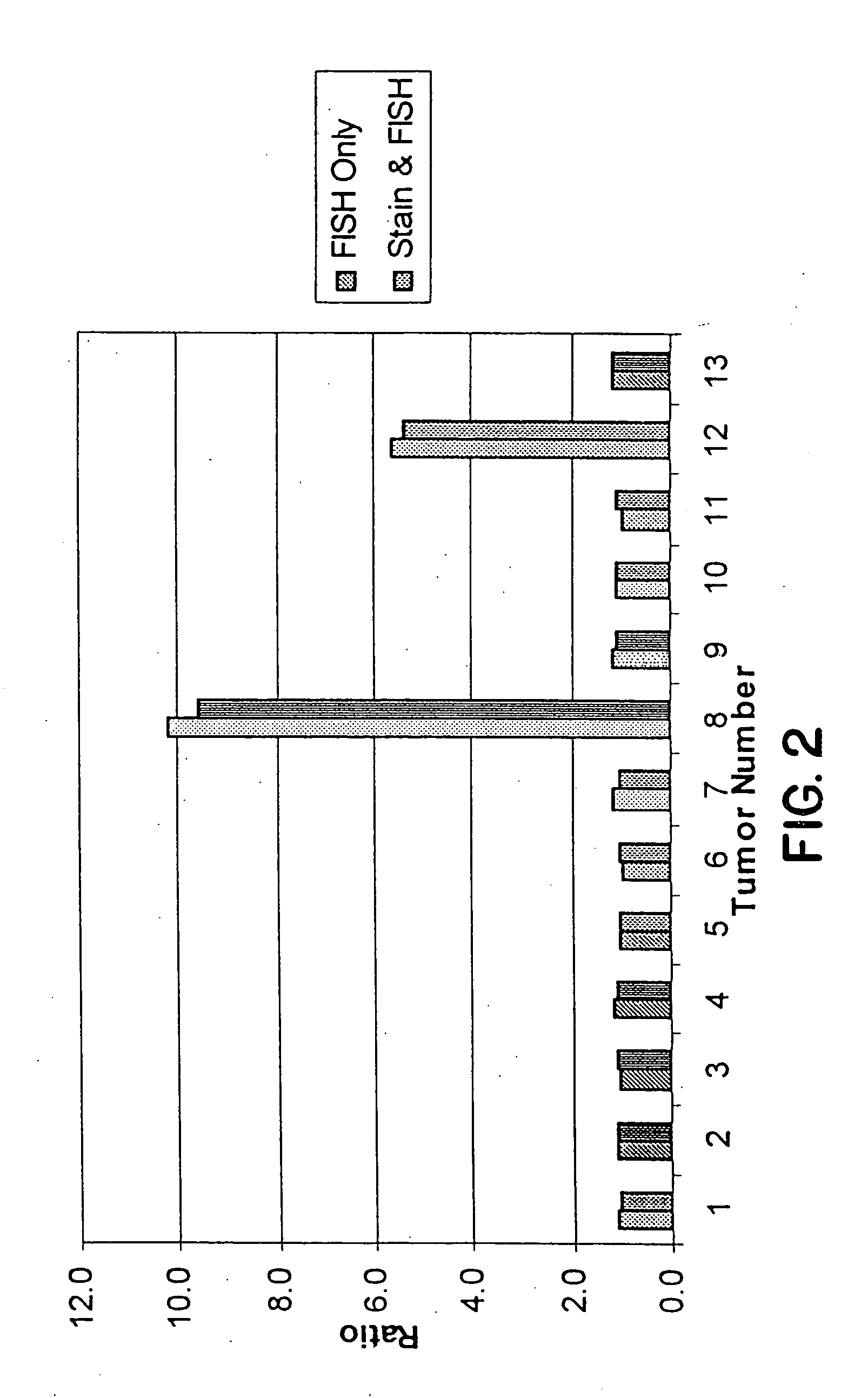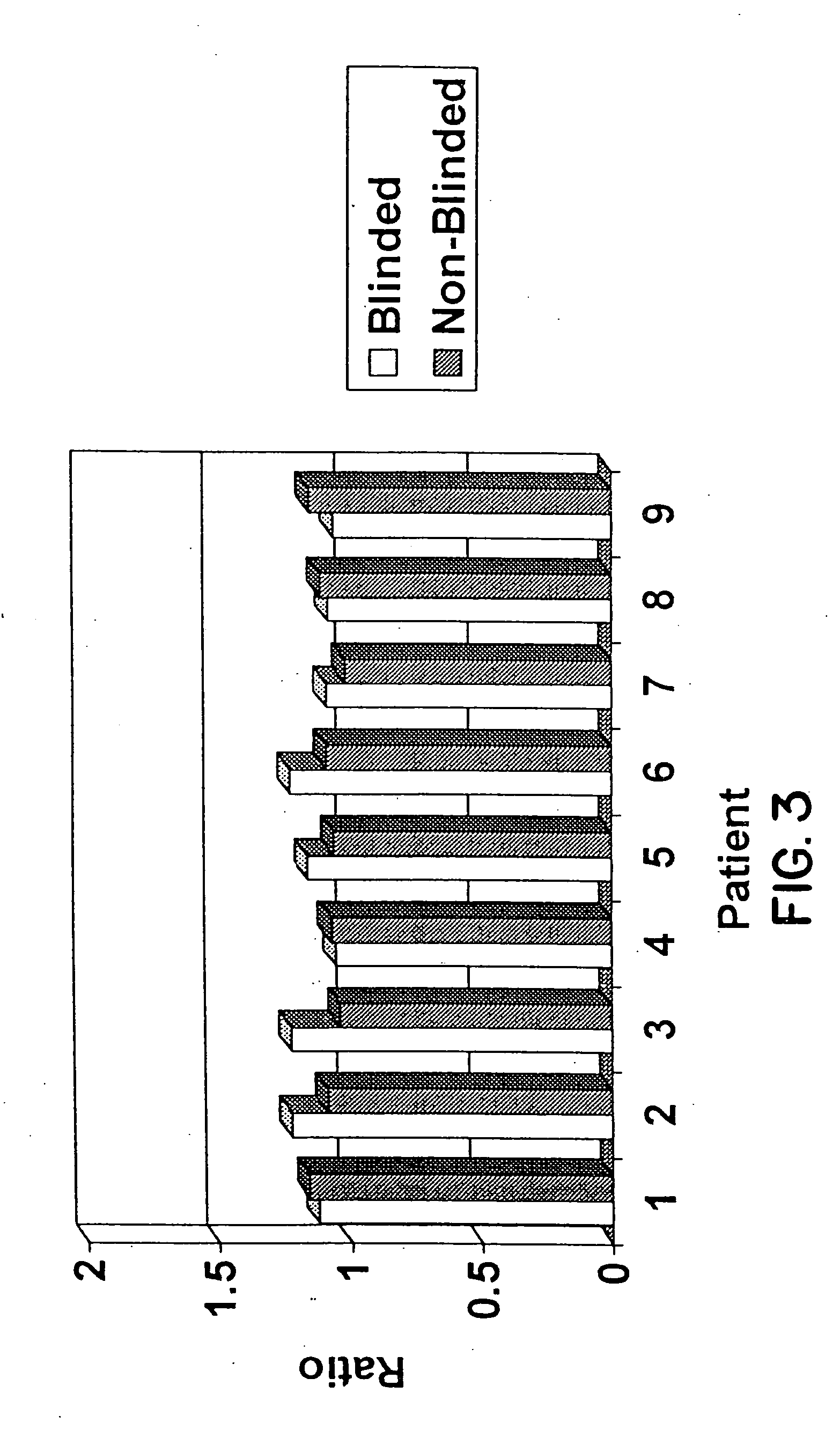Tissue analysis and kits therefor
a tissue analysis and tissue technology, applied in the field of tissue analysis, can solve the problems of dilution of malignant cells, less accurate methods that require tissue disaggregation, and inability to correlate malignant cells, and the loss of tissue architecture precludes the ability to correlate malignant cells, and the use of serial sections in this type of analysis
- Summary
- Abstract
- Description
- Claims
- Application Information
AI Technical Summary
Benefits of technology
Problems solved by technology
Method used
Image
Examples
example 1
Evaluation of Morphological Stains on FISH Analysis
[0094] A sensitive and specific evaluation of breast tumors for the amplification of HER2 / neu by FISH requires definitive identification and scoring of invasive ductal carcinoma cells as distinct from other stromal and inflammatory elements found in the biopsy. Thus, it was necessary to identify a stain which would allow for complete morphological evaluation of the tissue, and which also allowed for easy quantification of nuclear signals upon subsequent hybridization with fluorescently labeled nucleic acid probes. Many morphological stains fluoresce when illuminated by light of the same wavelength required to visualize the probe fluorophores of interest. When this autofluorescence is of a color similar to that of the probe fluorophore, signal quantification is made difficult.
[0095] Results from the evaluation of six commonly used morphological stains may be found in Table 2.
TABLE 2Evaluation of Morphological StainsAutofl.Autofl....
example 2
Detection and Quantification of HER2 / neu Amplification in Breast Tissue
Materials and Methods
Tissue Specimens and Preparation for FISH
[0097] Five micron sections were cut from breast tissue which had been fixed in buffered formalin and embedded in paraffin. Sections were placed on positively charged Superfrost Plus slides (CMS, Houston, Tex.) which had also been treated with poly-L-lysine or were mounted on positively charged slides which had no additional treatment prior to the mounting of the slides. Some material had been archived for up to fourteen years. Slide mounted tissue sections were heated on a 65° C. slide warmer for approximately 3 seconds, placed on the bench top for 2 seconds, and deparaffinized in Hemo-De (CMS, Houston, Tex.) for 10 minutes, x3, followed by immersion in 100% ethanol (EtOH) for 5 minutes, x2. Slides were air dried in a vertical position. Those slides to be stained for morphologic evaluation were dipped in HEMA 3® Solution I (CMS, Houston, Tex.) for ...
PUM
 Login to View More
Login to View More Abstract
Description
Claims
Application Information
 Login to View More
Login to View More - R&D
- Intellectual Property
- Life Sciences
- Materials
- Tech Scout
- Unparalleled Data Quality
- Higher Quality Content
- 60% Fewer Hallucinations
Browse by: Latest US Patents, China's latest patents, Technical Efficacy Thesaurus, Application Domain, Technology Topic, Popular Technical Reports.
© 2025 PatSnap. All rights reserved.Legal|Privacy policy|Modern Slavery Act Transparency Statement|Sitemap|About US| Contact US: help@patsnap.com



